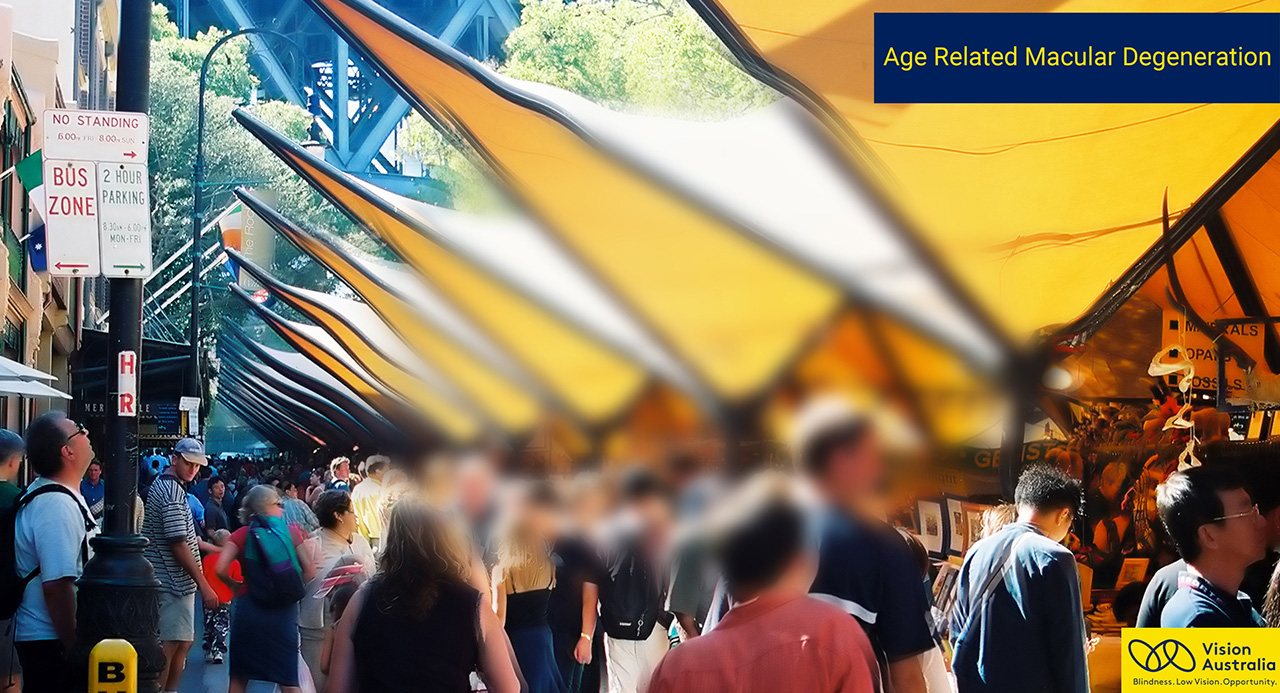What is it?
Age-related macular degeneration is also known as AMD or macular degeneration. It's the leading cause of vision loss in Australians over 50 years old.
Age-related macular degeneration is also known as AMD or macular degeneration. It's the leading cause of vision loss in Australians over 50 years old.

If you are concerned about a reduction in vision, light sensitivity or visual distortion, see an optometrist, ophthalmologist or your GP as soon as you can. AMD has three stages – early, intermediate and late. During the early and intermediate stages, vision may not be significantly affected. Late-stage AMD is when vision loss can be more severe. There are two types of late-stage AMD – dry and wet. Dry or atrophic AMD occurs when the cells in your retina die or atrophy over time, with a gradual loss of central vision. Wet or neovascular AMD occurs when abnormal blood vessels grow under the retina. Bleeding can occur with a sudden loss of central vision. Late-stage wet AMD is the most serious and fastest-acting form of the condition. It can result in severe sight loss over a short period of time if not detected and treated early by an eye specialist. Early diagnosis of AMD can help so that it can be carefully managed and monitored. Dry AMD can also turn wet, so make sure to get your vision checked if you experience any sudden changes and see your eye specialist within one week if you suspect wet AMD.
There is currently no cure for age-related macular degeneration, but there is a lot of research underway and many known risk factors. These include smoking, a family history of AMD and aging (particularly over the age of 75). You can minimise your risk by having regular eye health checks and getting support from your GP to stop smoking. You can also eat a healthy diet rich in antioxidants such as leafy green vegetables, and fish and nuts. Maintaining a healthy lifestyle is also important. You can also discuss supplements with your GP or eye specialist.
For late-stage wet AMD there is an effective treatment that can slow its effects. Injections of a protein known as anti-vascular endothelial growth factor (anti-VEGF) can help to slow the spread of damaged blood vessels. These are injections into the vitreous fluid in the eye, and are performed under local anaesthetic and usually involve minimal discomfort due to the small size of the needle.
It is important to attend all of your appointments with your eye specialist and follow their advice to help maintain your vision. The desired outcome is to prevent the growth of new abnormal blood vessels in the retina. Vision Australia can provide strategies and low vision aids to help you maximise your vision. These can include exploring magnifying aids, minimising glare, using correct lighting strategies, tactile markers and other daily living aids.
Fact sheet summary to print or download.
From tackling daily tasks to maintaining your job, favourite activities, studies or social life. You can still continue to be independent and do the things you love. We're here with the support and guidance that can help you take the next steps.
Explore tailored services, supports and products designed to suit your independence and your life.
Read more about Find services and supportLearn more about the funding options available to help you access our services, supports and products.
Read more about Explore your funding optionsExplore products and technology solutions specifically designed to assist with macular degeneration.
Read more about Shop products by eye condition